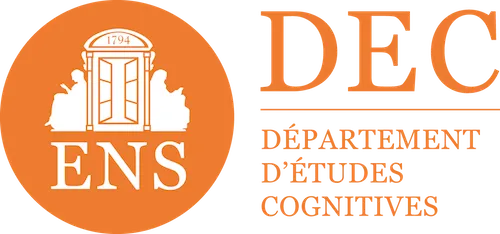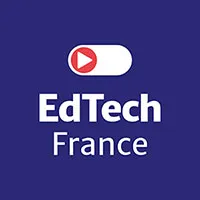

Bloom's Taxonomy Revised: Toward a More Modern Cognitive Approach to Learning
In short
- 1956 : Benjamin Bloom creates his original taxonomy with 6 rigid hierarchical levels to standardize mass education
- 1984 : Bloom discovers the “2 sigma problem”: personalized tutoring improves the performance of 98% of students, but remains economically impractical
- 2001 : Anderson and Krathwohl revise the taxonomy by integrating 45 years of advances in cognitive science and neuroscience
- Major evolution : transition from static levels to dynamic cognitive processes (Memorize, Understand, Apply, Analyze, Evaluate, Create)
- Educational flexibility : abandonment of strict linear progression in favor of spiral approaches that respect individual rhythms
- Modern applications : the revised taxonomy guides today educational AI to replicate the “2 sigma” effect on a large scale
- Impact : bridge between traditional pedagogy and 21st century technological innovations for personalized and effective learning
From Bloom (1956) to Anderson-Krathwohl (2001): a necessary revision
The genesis of the original taxonomy
In 1956, Benjamin Bloom revolutionized pedagogy with his taxonomy of educational objectives. This American educational psychologist seeks to classify learning according to its increasing cognitive complexity.
Its six-level hierarchy is rapidly becoming a global standard. Knowledge, Understanding, Application, Analysis, Analysis, Synthesis and Evaluation have structured curricula for nearly fifty years.
This classification meets the needs of the time: to standardize mass education and to facilitate objective evaluation. The objective-based approach then dominates teaching practices.
The “2 sigma problem”: a revolutionary discovery
In 1984, Bloom made a major discovery that changed his own vision. He Compare three teaching methods on equivalent student groups.
Traditional whole-class instruction is used as a reference. The Mastery Learning, similar to traditional education to which formative evaluations and regular feedback are added, slightly improves results. But it is one-on-one mentoring that has dramatic effects.
The average student with a personalized tutor outperforms 98% of students in traditional courses. This performance corresponds to two standard deviations (2 sigma) above the normal mean.
The problem? This highly efficient approach remains economically unfeasible on a large scale. How can these results be reproduced without mobilizing one tutor per learner? This question haunts Bloom and reveals the limits of his original taxonomy.
The 2001 revision: integrating cognitive science
In 2001, Lorin Anderson (former Bloom student) and David Krathwohl led a comprehensive revision of the taxonomy established by Bloom in 1956. Their team integrates forty-five years of advances in cognitive science and neuroscience.
The objective: to create a tool that is more flexible, scientifically based and adapted to contemporary realities. Revision goes beyond the mechanistic approach to favor authentic learning.
The six hierarchical levels remain but are being radically transformed. Three are renowned, two change positions. Above all, the rigid structure gives way to adaptive flexibility.
This major development meets modern training requirements. It favors complex situations and authentic problems rather than the restoration of fragmented knowledge.
The 6 cognitive processes revisited: major changes and implications
The revised taxonomy transforms static levels into dynamic cognitive processes. This semantic evolution reflects a finer understanding of brain function.
Memorize replace “Knowledge.” The focus is changing from possessing information to actively retrieving it. This process includes the recognition and recall of factual, conceptual, or procedural elements.
Understand succeeds “Understanding” with a more operational dimension. It includes interpretation, exemplification, classification, and explanation. The learner builds meaning rather than simply receiving.
Apply maintains its name but gains in precision. It distinguishes between execution (familiar procedures) and implementation (new procedures in new situations).
Analyze keeps its name but restructures its components. It integrates differentiation, organization, and causal attribution. The learner breaks down to rebuild better.
Evaluate and Create exchange their hierarchical positions. This major reversal recognizes that evaluation can precede creation. You can judge before you produce.
This hierarchical flexibility is revolutionizing instructional design. The levels no longer constitute a mandatory staircase but a set of cognitive tools that can be mobilized according to needs.
The abandonment of rigid hierarchy: flexibility and pedagogical adaptability
The original taxonomy required a strict linear progression. Impossible to analyze without first memorizing, understanding and applying. This rigidity contradicted empirical observations of learning.
The revised version breaks this sequential logic. Cognitive processes may overlap, interpenetrate, or reverse depending on learning situations. A learner can create to better understand. It can assess before applying. This flexibility respects individual cognitive rhythms and disciplinary specificities.
Cantin (2011) states: “These levels do not necessarily have to be followed in order.” To mobilize superior processes, the concepts must be known but not necessarily mastered sequentially. This flexibility is revolutionizing instructional design. It allows spiral approaches where the learner revisits concepts at different levels of complexity.
Concrete applications: from instructional design to educational AI
The revised taxonomy is now finding concrete applications in educational technologies. It guides the design of personalized learning experiences.
For example, educational AI coaches can analyze learners' responses to accurately identify faulty cognitive processes. These are modern adaptive systems that replicate Bloom's “2 sigma” effect. They personalize feedback according to the type of knowledge and the cognitive processes involved.
Bloom's revised taxonomy is a bridge between 20th century educational insights and 21st century technological innovations. It offers a rigorous framework for designing effective and sustainable learning.
Make an appointment directly with our eLearning experts for a demo or simply more information.












